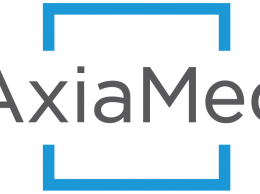
Mark Riley
By Mark Riley
Many middle market companies are considering ways to create a diverse and inclusive environment. But their employees aren’t the only ones to benefit. Companies are seeing the advantages of embracing the different ages, ethnicities, genders and education levels of their employees to create an inclusive, creative and collaborative workplace.
Those currently entering the workforce are more ethnically and racially diverse than older employees, according to the Pew Research Center’s study, “Millennials: A Portrait of Generation Next.” The level of diversity in the workplace — not only in race and gender — is growing. Given the strategic business value in creating an open, inclusive workplace, chief financial officers have become increasingly involved in the process. This includes being key decision- makers in HR conversations relating to benefits, as well as weighing in on where to invest resources that enhance an organization’s culture of diversity and inclusion.
Companies are focused on diverse talent because this diversity brings new perspectives, innovation and ideas that can lead to greater creativity and problem solving, whether it’s in product innovation, marketing strategies or relating to clients. In addition, employees are increasingly looking for companies that value inclusion and diversity, and organizations are realizing that having a variety of perspectives helps their company adapt and evolve.
A culture of inclusion is an environment in which all employees feel comfortable to share their ideas, perspective and knowledge, facilitating ingenuity and collaboration. Many organizations recognize this and are embracing strategies to actively promote an environment of diversity and inclusion, which includes:
• Recruiting and retaining diverse talent;
• Maintaining relationships with diverse suppliers;
• Offering training and mentorship to meet the diverse needs of employees.
As the workforce is becoming less homogenous, companies are implementing diversity councils to create an atmosphere that yields ideas and offerings that are in sync with a changing market. Best practices include providing diversity and inclusion education and awareness, and executive management training on the value of diversity and inclusion in the workforce.
It’s now widely recognized that people work more effectively when they are free to be themselves at work. They are able to communicate more openly, coming up with ideas and solutions and building supportive cooperative relationships with colleagues, clients and customers.
An LGBT Ally Program fosters positive change by engaging employees in LGBT initiatives and programs, providing opportunities to participate in educational and volunteer events, while learning how to support LGBT colleagues.
Allies are among the most effective and powerful voices of the LGBT movement. They help others understand the importance of equality, fairness, acceptance and mutual respect, which has a lasting benefit throughout the culture of an organization.
Global affinity groups, commonly referred to as employee networking groups, are another way to actively support engagement by encouraging employees throughout the company to connect with colleagues with similar backgrounds, interests or dimensions of diversity.
While CFOs will continue to be involved in hiring and retention decisions from a benefits standpoint, increasingly they also understand the value of company culture to a workforce and strive to quantify that value through programs and training that help their company succeed.
• Mark Riley is a senior vice president and the local market executive for Bank of America Merrill Lynch.






 Print
Print Email
Email















